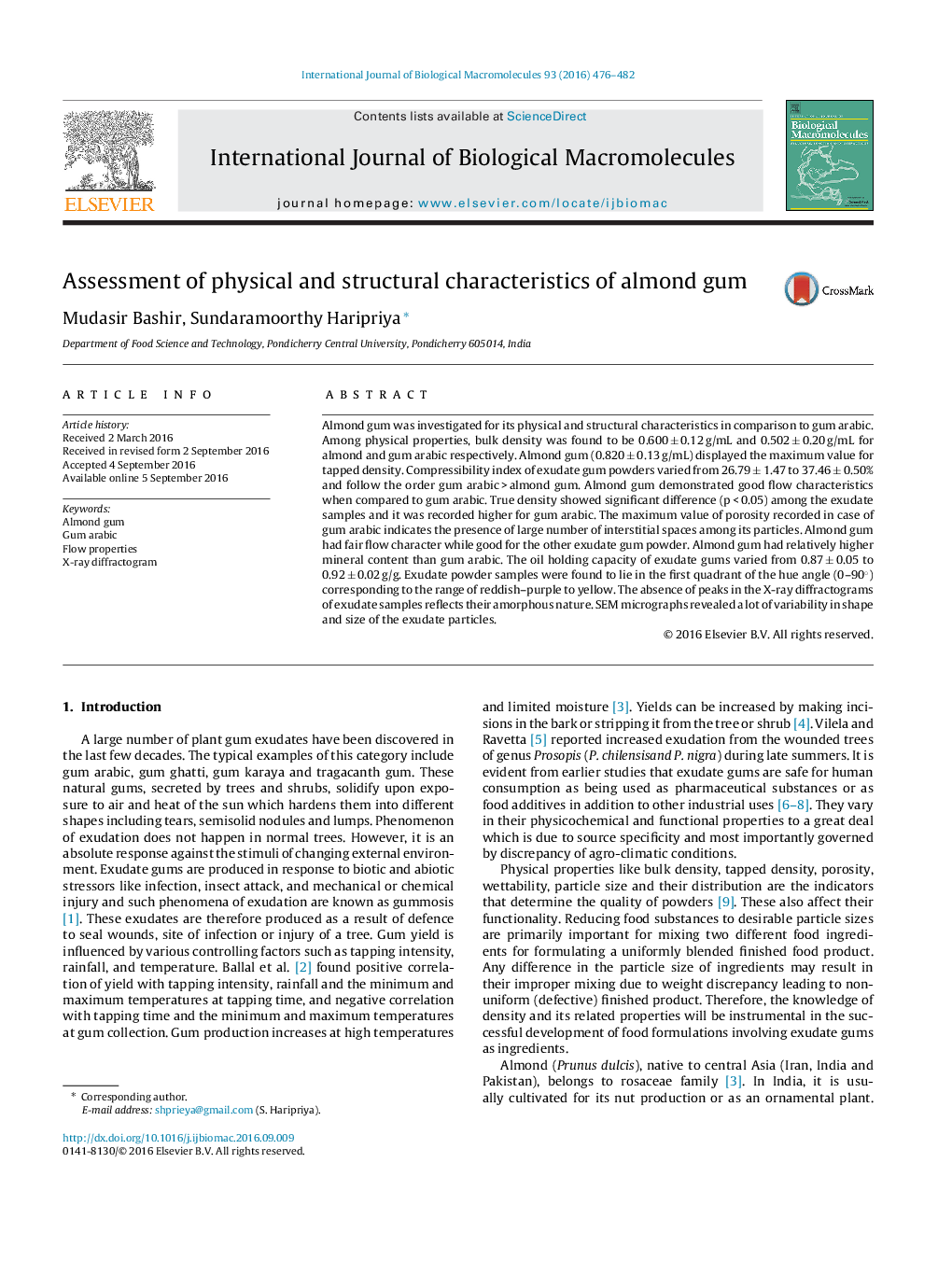| Article ID | Journal | Published Year | Pages | File Type |
|---|---|---|---|---|
| 6481665 | International Journal of Biological Macromolecules | 2016 | 7 Pages |
â¢Almond gum was investigated for its physical and structural characteristics.â¢Almond gum demonstrated good flow characteristics when compared to gum arabic.â¢The absence of peaks in the X-ray diffractograms of exudate samples reflects their amorphous nature.â¢SEM micrographs revealed a lot of variability in shape and size of the exudate particles.
Almond gum was investigated for its physical and structural characteristics in comparison to gum arabic. Among physical properties, bulk density was found to be 0.600 ± 0.12 g/mL and 0.502 ± 0.20 g/mL for almond and gum arabic respectively. Almond gum (0.820 ± 0.13 g/mL) displayed the maximum value for tapped density. Compressibility index of exudate gum powders varied from 26.79 ± 1.47 to 37.46 ± 0.50% and follow the order gum arabic > almond gum. Almond gum demonstrated good flow characteristics when compared to gum arabic. True density showed significant difference (p < 0.05) among the exudate samples and it was recorded higher for gum arabic. The maximum value of porosity recorded in case of gum arabic indicates the presence of large number of interstitial spaces among its particles. Almond gum had fair flow character while good for the other exudate gum powder. Almond gum had relatively higher mineral content than gum arabic. The oil holding capacity of exudate gums varied from 0.87 ± 0.05 to 0.92 ± 0.02 g/g. Exudate powder samples were found to lie in the first quadrant of the hue angle (0-90°) corresponding to the range of reddish-purple to yellow. The absence of peaks in the X-ray diffractograms of exudate samples reflects their amorphous nature. SEM micrographs revealed a lot of variability in shape and size of the exudate particles.
